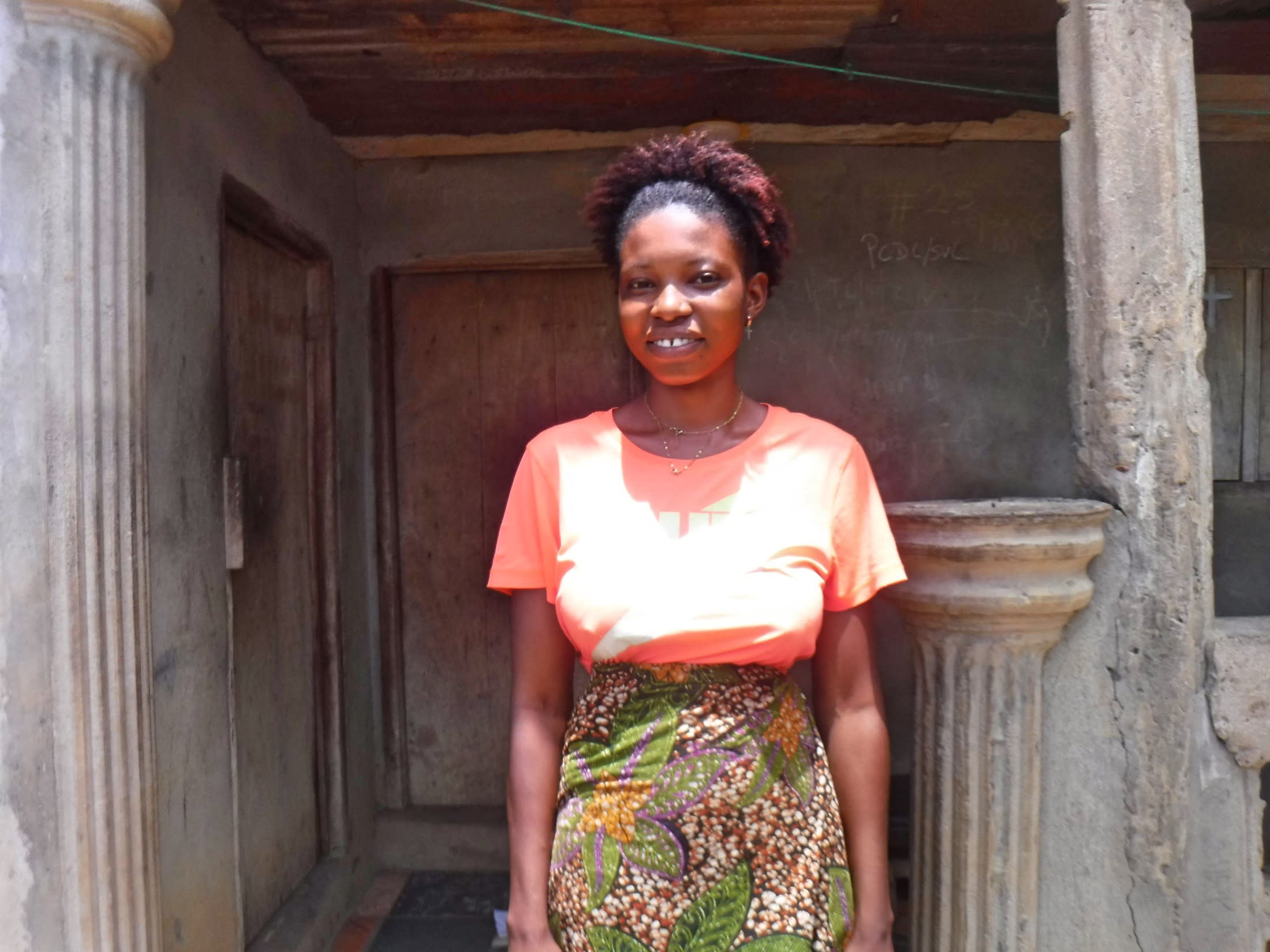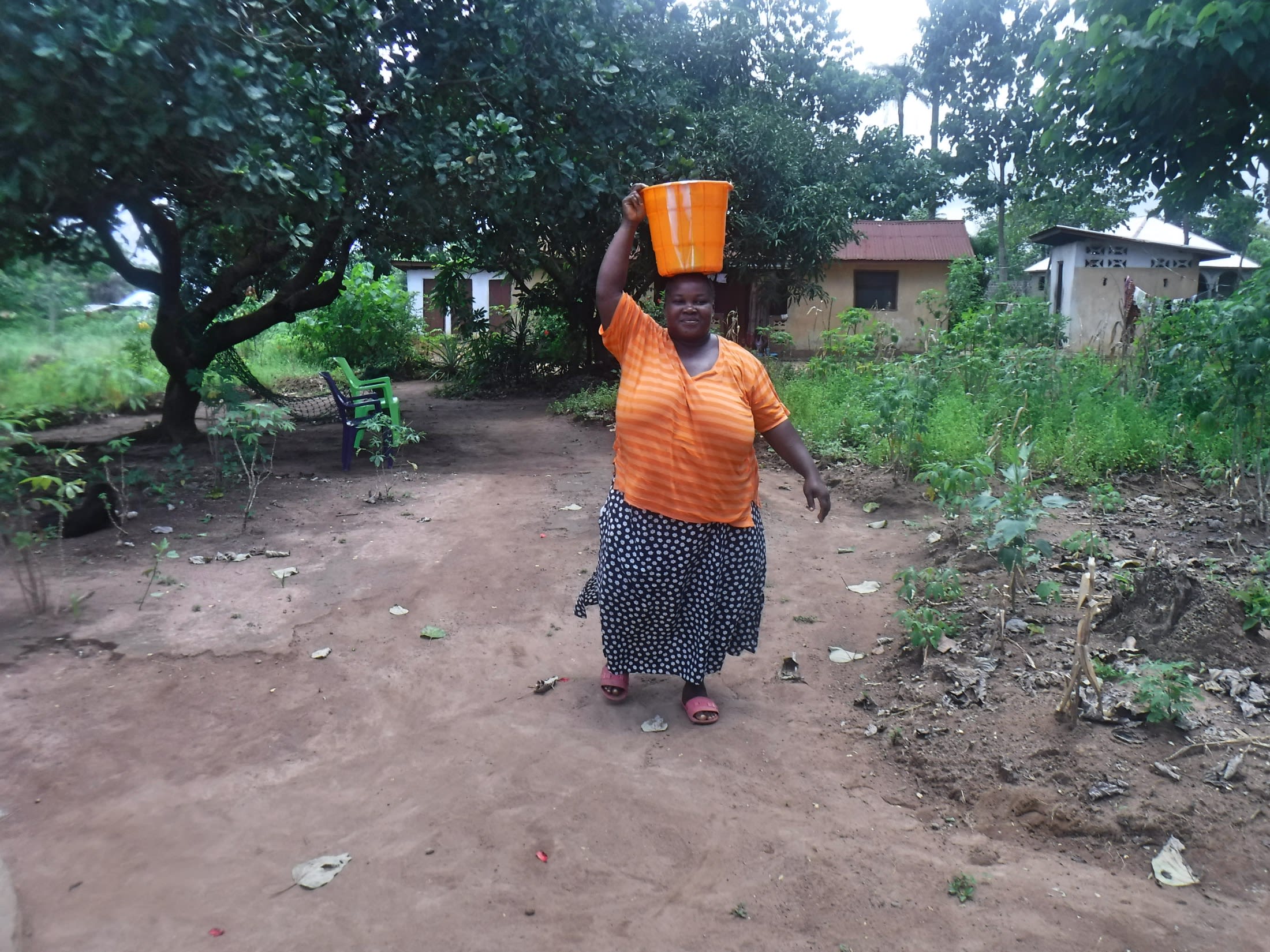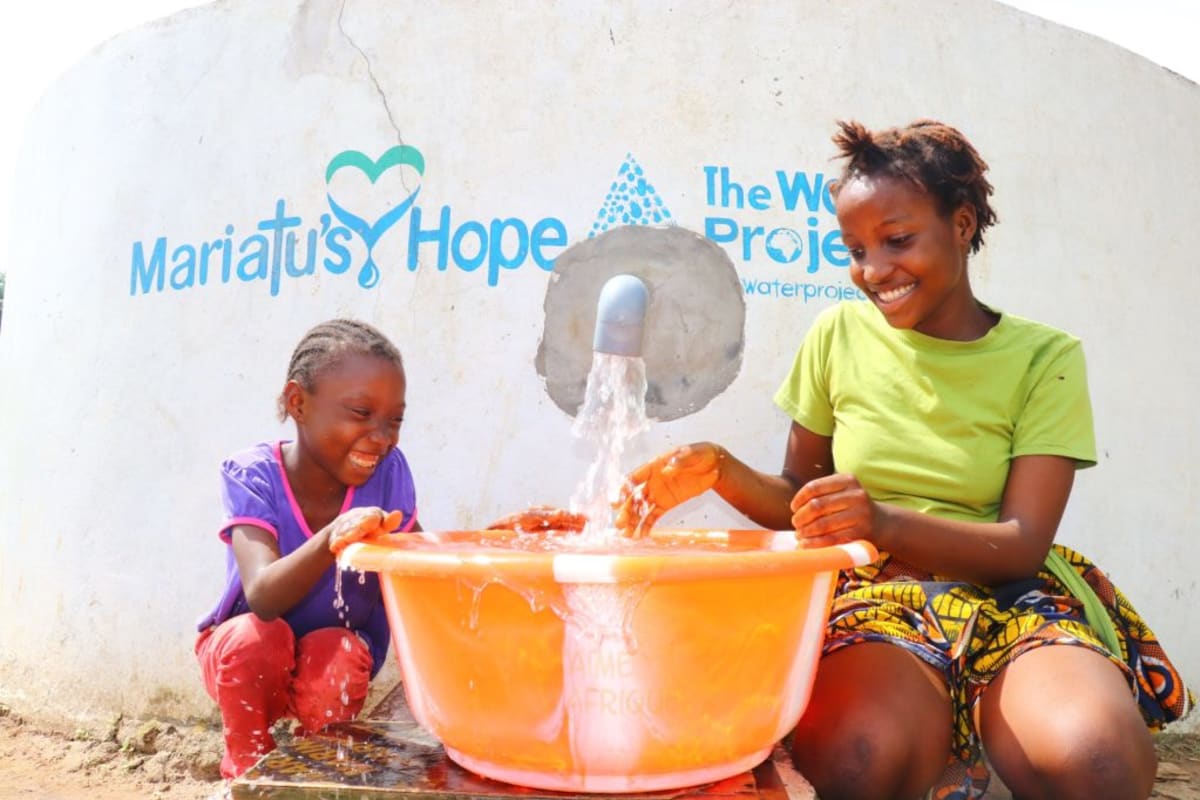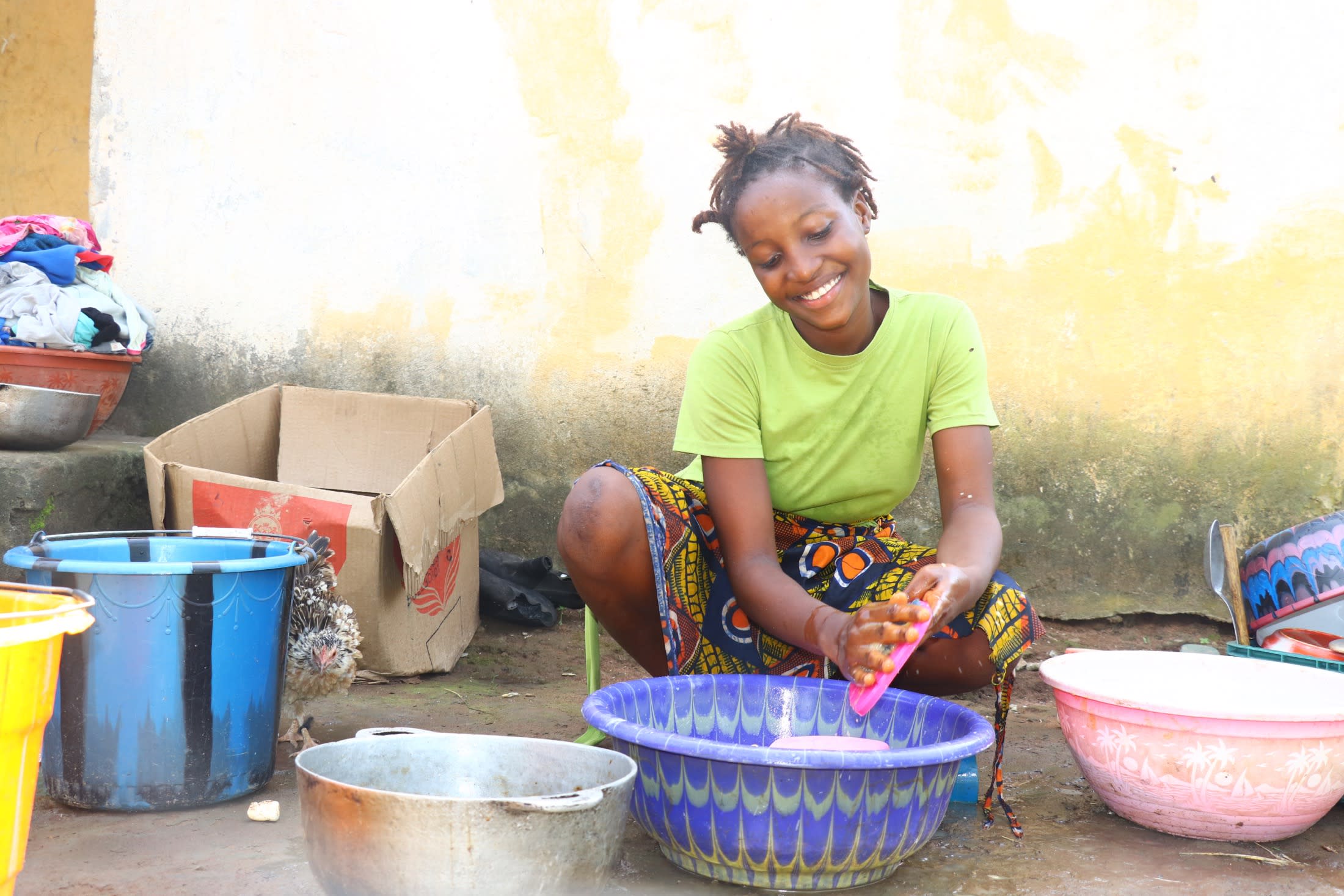The 150 people of Wasaya have given up on their once-crowded community well. The well wouldn't yield enough water for everyone in the community and was slow to recharge, and the pump broke down so many times that it was finally removed. Now, all the women and girls in the community must walk a further 30 minutes to fetch water for all their needs, and this far distance is weighing on them.
"After the pump breakdown, water problems became a big challenge for me," said 15-year-old Monica K, in the photo below.

"I have to go [an] extra mile to fetch water before going to school. Because of this condition, I am late for school. After I return home from school, I must fetch water to prepare food for us, assisted [by] my mother. Sometimes my younger sister helps me [with] fetching water, or both of us go to the pump to fetch water. The [alternative] well is in good order, but it is far away from my house. Every morning and evening, I must walk [a] far distance to the pump to fetch water. If I meet people, I must wait for [a] few minutes before I fetch water. This situation causes me not to complete my housework."
Although the well they are currently using is protected and monitored, it is so far away that fetching water there disrupts the water users' lives in more ways than one. Not only is walking long distances for water inconvenient, but ultimately, it affects their health, hygiene, livelihoods, and more.
“Households with travel times greater than 30 minutes have been shown to collect progressively less water. Limited water availability may also reduce the amount of water that is used for hygiene in the household.” (The Relationship between Distance to Water Source and Moderate-to-Severe Diarrhea in the Global Enterics Multi-Center Study in Kenya, 2008–2011)
"I am a businesswoman and gardener," said 38-year-old Elizabeth Samura (fetching water in the below photo).

"I embark on my business daily. But before going [to] trade, I have to do my housework, like fetching drinking water, preparing my kids for school, etc. I also planted different crops at my backyard for living. The water well I used to fetch water from had a breakdown. This situation caused me to find another water source. Due to [the] water problem in my community, I [am] hardly done [with] my activities on time. I will be very much happy if this water well gets renewed."
As Elizabeth said, the people of Wasaya will be so relieved if their own community well can be rehabilitated to serve its people once again, with added protection and monitoring. A reliable source of water will give these people the freedom to accomplish everything they need to each day without worrying about walking long distances.
Here’s what we’re going to do about it:
Well Rehabilitation
The well marked for this overhaul is dry for a few months every year and needs major work to supply adequate, clean water to the community year round. The pump will be removed, and a hand auger will be lowered inside and powered by a drill team. This hand auger will allow the team to drill several meters deeper to hit a sufficient water column that will ensure the well supplies water throughout all seasons.
As the team drills, casing will be installed, transforming the bottom of this hand-dug well into a borehole. PVC piping will connect this lower system directly to the pump, a construction that we know will also improve the quality of water.
Once this plan is implemented, everyone within the community will have access to safe drinking water in both quality and quantity, even through the dry months.
Hygiene and Sanitation Training
There will be hygiene and sanitation training sessions offered for three days in a row.
After our visit, the hygiene and sanitation trainer decided it would be best to teach community members how to build a tippy tap (a hand-washing station built with a jerrycan, string, and sticks). They will use these tippy taps for handwashing demonstrations, and will also teach about other tools like dish racks and the importance of properly penning in animals.
These trainings will also strengthen the water user committee that manages and maintains this well. They enforce proper behavior and report to us whenever they need our help solving a serious problem, like a pump breakdown.

 Borehole Well and Hand Pump
Borehole Well and Hand Pump










 "I will be able to go to school on time [and] launder my uniform when I am off from school. I will no longer walk a long distance to fetch water because there is a water well in my community. There is pure and safe drinking water in the community."
"I will be able to go to school on time [and] launder my uniform when I am off from school. I will no longer walk a long distance to fetch water because there is a water well in my community. There is pure and safe drinking water in the community."
 Finally, we lined up the drill rods and started to drill! We reached a final depth of 21 meters with water at 12 meters. The hand-drill method allowed the team to install the cylinder far below the aquifer so that the community has excellent water access throughout the year.
Finally, we lined up the drill rods and started to drill! We reached a final depth of 21 meters with water at 12 meters. The hand-drill method allowed the team to install the cylinder far below the aquifer so that the community has excellent water access throughout the year.
















